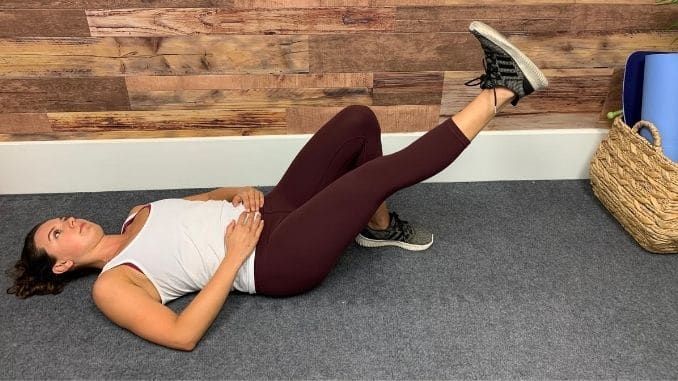
Insufficiency fractures are stress fractures that can occur due to minor pressure in a weakened bone. Though this injury can happen anywhere in the body, the spine and pelvic bones are usually the most affected.
Causes of Insufficiency Fractures
The most common causes of insufficiency fracture are as follows:
- Osteoporosis is the most common and leading cause of insufficiency fractures. This condition commonly develops after age 50 and is characterized by bone loss and fragility. Some studies show that 32 to 72 percent of people with insufficiency fractures have osteoporosis.
- Any Process Which Weakens Bone Is A Risk Factor
- If osteoporosis goes untreated, fractures can occur spontaneously without injury (i.e., insufficiency or fragility fractures).
- The bones are too “fragile” or “insufficient” to support one’s weight for simple activities such as standing or daily walking.
Treatment
The treatment depends on the location, severity, and whether the fracture is complete or incomplete. With certain types of fractures, your healthcare provider may require you to limit how much weight you place on your injury. Treatment approaches include:
- Conservative Management – includes rest, pain relief medication, and physical therapy. Usually, in sacral fractures, pelvic injuries, and hairline hip fractures, these conservative treatments are the first line of treatment.
- Plaster casts are supportive devices to help keep an injured bone in place while it heals. Plaster casts, particularly, maintain the spinal alignment, causing pressure sores and interfering with the patient’s rehabilitation.
- Internal Fixation – this refers to the method of physically reconnecting the bones, which involves using special screws, plates, rods, wires, or nails that the surgeon places inside the bones to fix them.
- Vertebroplasty – provides pain relief and strengthens the bone of vertebrae weakened by disease. This treatment method injects cement into a cracked or broken spinal bone to help relieve pain. Vertebroplasty is often used to treat a type of injury called a compression fracture. These injuries are usually caused by osteoporosis, a condition that weakens bone.
- Kyphoplasty – This procedure treats painful compression fractures in the spine. In a compression fracture, all or part of a spine bone collapses. The procedure is also called balloon kyphoplasty.
Physical Therapy
The benefits of exercising are undeniably hard to ignore. Everyone benefits if done regularly, regardless of gender, age, and physical ability. Exercise is a great way to stay in shape and boost your mood, but sometimes overuse and repetitive movements cause these small cracks in the bone that lead to insufficiency fractures or stress fractures, which can happen at any age. Older adults and those with conditions such as osteoarthritis and osteoporosis are at higher risk for an insufficiency fracture becoming chronic, meaning that it has not healed after about three months.
Here are a few exercises that can be done should be experiencing insufficient fractures.
Pelvic Lift
Lie down on your back with your knees bent and the soles of your feet on the floor. Cross your arms over your chest and touch your knees together. Use your trunk muscles to lift your hips off the floor until there is a straight line from your knees to your shoulders. Hold this position for about five seconds, then use a slow and controlled motion to lower your hips back to the ground. Repeat.
Straight Leg Raise
Lie down with your knees bent and your hands by your sides. Tighten your abdominal muscles and straighten your left leg while keeping your other knee bent and your feet flat on the floor. Use a slow and controlled motion to lift your straightened leg until the knee of your straightened leg is directly beside your bent knee. Hold this position for a couple of seconds and then slowly bend your leg and place your foot on the floor. Repeat for an equal number of repetitions using each leg.
Back Extension
Lie down on your stomach with your feet, arms at your sides, and palms touching your hips. Lift your head and shoulders off the ground as far as possible without pain. Hold this position for about five seconds and lower your upper body back to the ground. Be sure to tell your doctor if this exercise causes severe pain. Repeat.
Lying Hip Extension
Lie down on your stomach with your legs outstretched behind you and your arms under your head. Keep your head and upper body on the ground, and slowly lift your right leg off the ground while keeping your knee straight. Hold this position for a few seconds, then slowly lower your leg to return to the starting position. Repeat for an equal number of repetitions with each leg.
Final Thoughts
If your pain has not subsided after a significant amount of rest and time, it’s always best to schedule an appointment with your orthopedist. Your symptoms, clinical history, and physical examination will determine whether you need an MRI, which can indicate whether you have an insufficiency fracture.
Regardless of your age and whether or not you have known risk factors for an insufficiency fracture, it’s never too late to start strengthening and protecting your bones with these steps.
- Improve bone health with a diet rich in vitamin D and calcium.
- Strengthen bones and prevent further bone loss by doing weight-bearing exercises regularly. This also builds muscle to lower the risk of falls.
- Stop smoking. It can lower bone density.
- Limit how much alcohol you drink. It gets in the way of calcium absorption and makes you more unsteady on your feet.
The recovery from an insufficiency fracture can be weeks or months, depending on the severity and location. An individualized program is preferred for faster recovery. It can return to previous activities based on multiple factors, including the severity and location of the fracture as well as the patient’s age, health, and goals.
Surgery is typically reserved for patients who are not successful with conservative treatment. However, specific insufficient fractures in certain patients may be treated surgically at their initial presentation.





